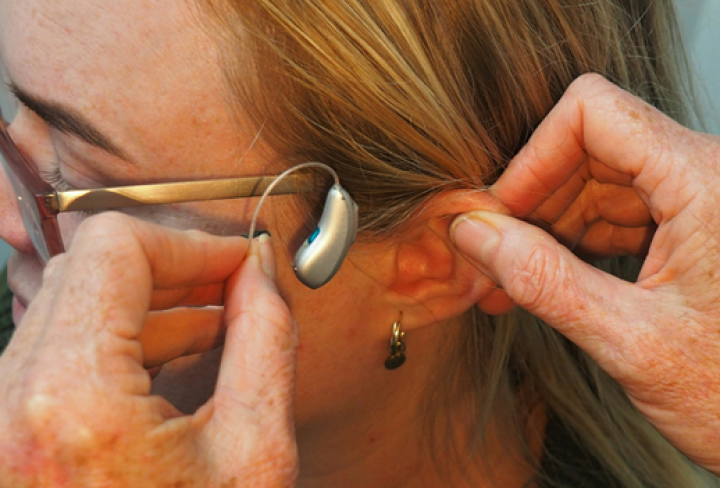Hearing loss affects many people worldwide. It changes how we interact with others, making daily communication a challenge. Approaching this topic with empathy is crucial. Recognizing the impact on lives helps us understand the need for effective solutions. This guide explains the basics of hearing loss, signs to watch for, and ways to manage it. Let’s dive into what hearing loss means, its types, and how we can help those dealing with it daily.
What is Hearing Loss?
Hearing loss refers to the reduced ability to hear sounds that others hear effortlessly. It can be either temporary or permanent. Temporary loss might stem from loud noises or infections, which often get better with time. Permanent loss might arise from damage to inner ear nerves or other serious issues. Knowing which type you face is vital because it affects treatment choices. Being informed helps manage expectations and seek appropriate help.
Exploring Types of Hearing Loss
There are three main types of hearing loss: Sensorineural, Conductive, and Mixed.
- Sensorineural hearing loss occurs when the inner ear is damaged or the nerves connecting to the brain don’t work correctly. It’s common with aging or due to loud noises. For instance, imagine a person who spent years working at a construction site surrounded by loud machinery. The constant exposure to high decibel sounds gradually reduces their ability to hear well.
- Conductive hearing loss affects the outer or middle ear. It happens when sounds can’t travel efficiently. Ear infections or blockage could be the cause. Picture a child with frequent ear infections. Temporary hearing issues might arise, but they often improve once the infection clears.
- Mixed hearing loss is a combination of both types. It might happen when someone has age-related changes and also has fluid buildup that blocks sound. This overlapping condition typically requires more comprehensive treatment.
People often don’t realize how much these conditions affect their lives until they experience them. Meeting friends, watching TV, or listening to music becomes challenging, showing how critical hearing is for connecting with the world.
Recognizing Early Symptoms of Hearing Loss
Spotting the symptoms of hearing loss early can make a big difference.
- Difficulty in following conversations, especially in noisy places
- Asking others to repeat themselves frequently
- Turning up the volume on devices higher than normal
These signs may seem minor but are important cues. If you notice them in yourself or others, it’s time to consult a healthcare provider. Early detection improves management outcomes, helping maintain good communication skills.
The Significance of Early Detection
Identifying hearing loss early opens doors to better life quality.
- Early action can halt further deterioration
- Use of hearing aids for hearing loss can maintain social engagement
Consider a testimonial: Jane, who discovered her hearing difficulties early through a routine check-up, embraced bilateral hearing aids. They transformed her social life, allowing her to engage fully in her favorite activities. Her story illustrates the power of prompt intervention.
Myths and Misconceptions about Hearing Loss
Let’s clear up some common myths about hearing loss.
- Hearing loss is not only about aging. Young people can experience it too, from noise exposure or infections.
- Many believe using hearing aids marks old age. However, hearing aids for deaf people and those with partial loss can greatly enhance life quality.
- In places like India, societal stigma can prevent people from seeking help.
Talking about these myths helps break down barriers and encourages more people to seek assistance without shame.
Available Treatments and Hearing Solutions
If you or someone you know struggles with hearing loss, here are potential solutions:
- Hearing aids for hearing loss: Devices like bilateral hearing aids amplify sounds coming from various directions.
- Surgical options: Cochlear implants can restore hearing when aids aren’t sufficient for profound loss.
Staying informed on the latest technology prevents missing out on devices improving sound clarity and overall life experience.
How to Communicate Effectively with Hearing Loss
When you know someone with hearing loss, your communication style can help them tremendously.
- Face the person directly and speak clearly
- Use normal volume and pace
- Repeat or rephrase when needed
These steps create an inclusive environment. Plus, teaching self-advocacy helps those with hearing difficulties express their needs clearly and confidently.
Technological Advancements and Innovations
Recent advancements in hearing loss diagnosis and treatment are promising. In India, technology is rapidly improving diagnosis efficiency and device functionality. Success stories, where people regained hearing and communication skills through innovative devices, highlight the transformative power of technology. It shows a hopeful future for those facing hearing challenges.
Proactive Measures for Hearing Loss Prevention
Protecting our hearing requires proactive steps:
- Avoid excessively loud environments and wear protection like earplugs when necessary
- Limit headphone use at high volumes
- Schedule regular hearing check-ups
These practical hearing loss prevention tips help maintain good hearing health throughout life.
Concluding Thoughts: Embracing Change
Hearing is a vital part of our lives, connecting us to the world. We’ve covered key points on understanding, detecting, and managing hearing loss. Let’s continue to discuss openly and advocate for proactive care. Break the stigma, support early diagnosis, and embrace new technologies to improve quality of life. Taking these steps ensures welcoming environments for everyone, regardless of their hearing ability.

